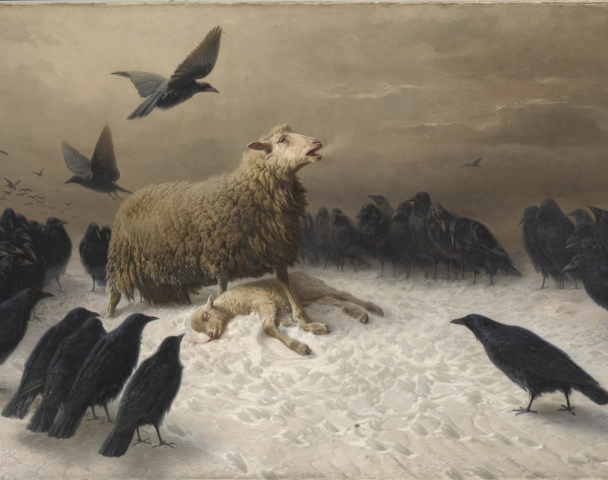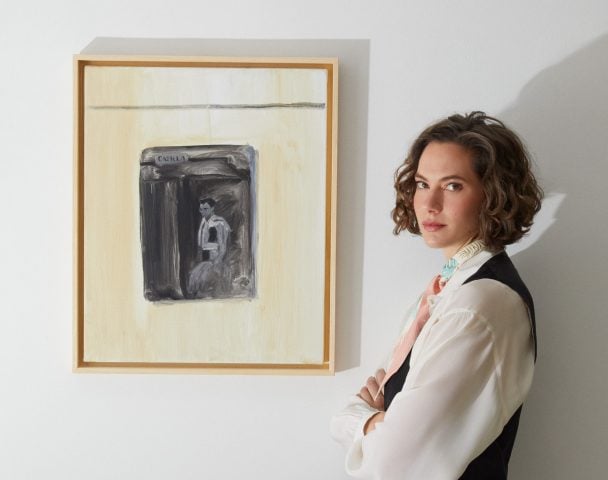A new Nam June Paik exhibition in Manila is making news. On view through November 30 at León Gallery International, a subsidiary of the Philippine’s auction house León Gallery, “Nam June Paik in Manila” brings together artworks made between 1983 and 2005, including a robot made of vintage Bakelite radios (Bakelite Robot, 2002), a projection of a candle housed in a TV monitor (One Candle, 1996), and several works on canvas.
It’s the first time Paik’s work has been shown in the Philippines. And it has been received warmly—all of the work has already sold, with most of it going before the opening.
The exhibition is a collaborative effort between three parties: León Gallery; Ken Hakuta, Paik’s nephew and the overseer of his estate; and Gagosian, who has represented Paik’s estate since 2015.
This is significant for a couple of reasons. For one, Gagosian rarely joins forces with other galleries in this capacity. Driven by Nick Simunovic, Gagosian’s Hong Kong director, the gallery lent all of the works on consignment. Simunovic says he saw the “exhibition as a unique opportunity to further share Nam June’s vision with a wider audience in Southeast Asia.” (He also notes that the gallery does not have any other projects planned in the Philippines at this time.)
“It is not an exaggeration to say that Paik was one of five or six foundational artists of the 20th century,” Simunovic tells artnet News. “His influence simply cannot be overstated. A visit to any contemporary art museum anywhere on the planet offers demonstrable proof.”
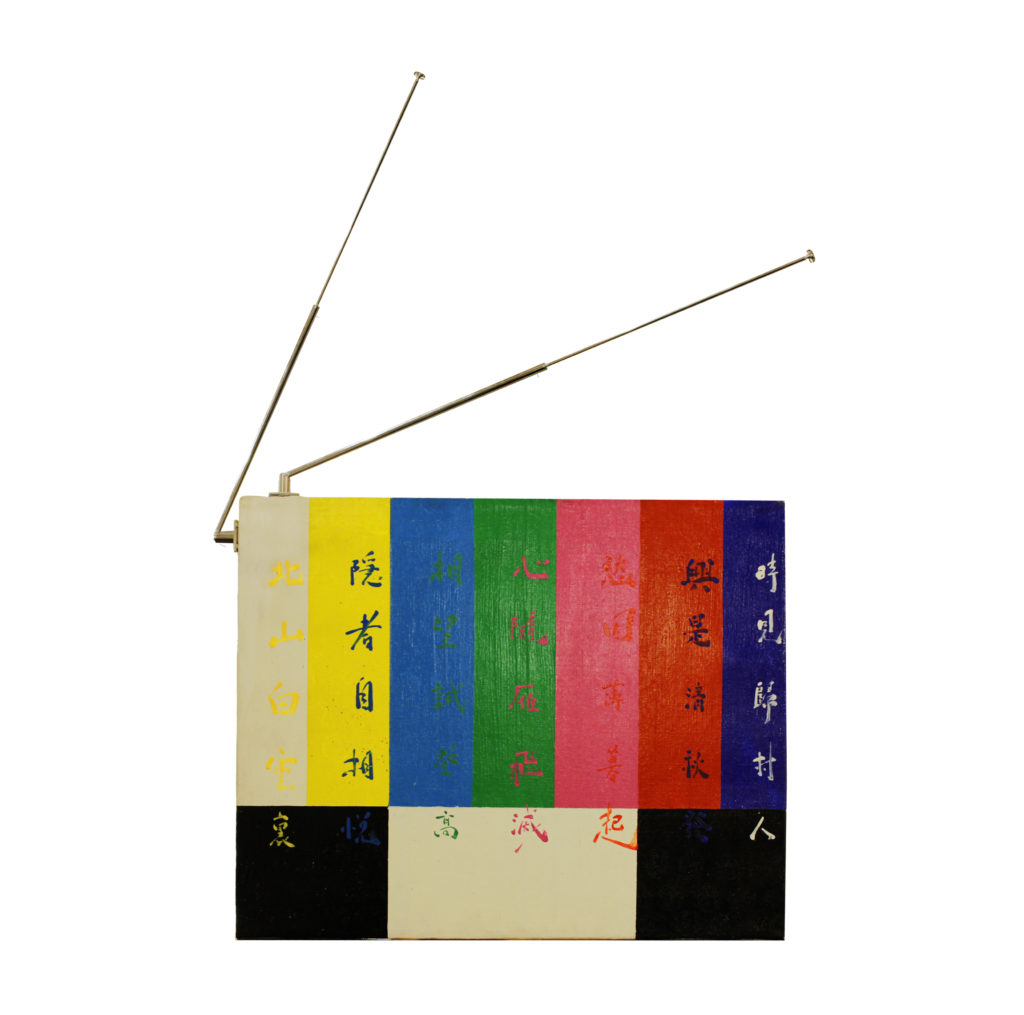
Nam June Paik, Tang Poetry on Color Bar Op. 36 (1982). Courtesy of León Gallery International.
This might be the first in a wave of major Paik show’s we’ll see in the upcoming years. In October of next year, the Tate Modern and San Francisco Museum of Modern Art will co-host a massive retrospective of his work, “Nam June Paik: The Future Is Now.”
The flourishing of interest makes sense, given Paik’s interest in the speed and profusion of technology. His work seems just as relevant as ever today—a fact that’s not lost on Simunovic.
“Nam June Paik was a prophet,” he says. “He coined the term ‘electronic superhighway’ in 1971, which in and of itself is astonishing. As far as technology goes, he prefigured almost everything about the world in which we currently live—Amazon, Skype, the iPhone—he foresaw it all. In spite of his uncanny ability to predict the ubiquity of technology in contemporary life, he did not fear this future or find it alienating. Rather, he believed in the possibility of harnessing and humanizing technology to serve creative ends.”
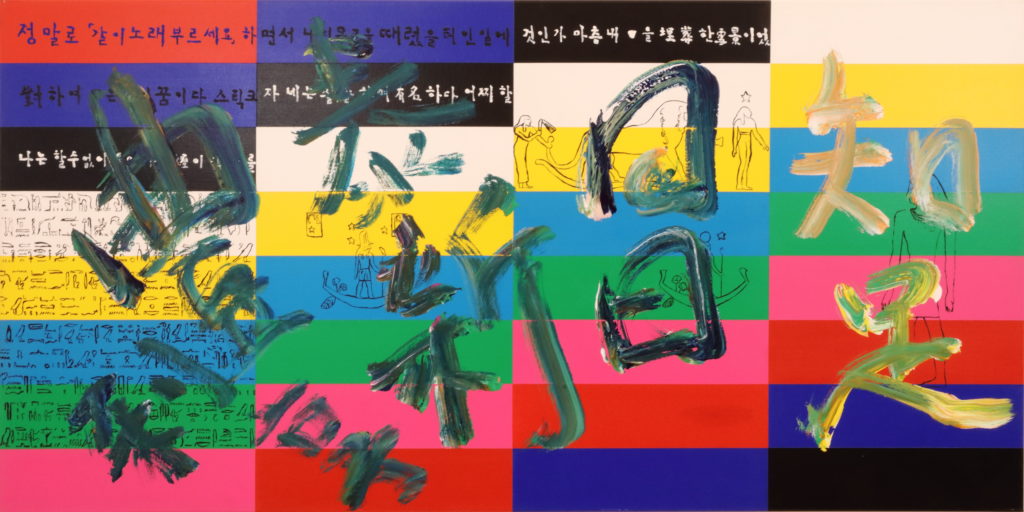
Nam June Paik, Untitled (Hieroglyphs and Color Bars) (1995). Courtesy of León Gallery International.
This out-of-the-box approach to art and technology was one of the reasons León Gallery pursued a Paik show. For Jaime Ponce de Leon, managing director of León Gallery International, Paik represents a distinctly Asian approach to art
“Paik was always acutely aware of his being an Asian artist,” Ponce de León says. “He once famously referred to himself as ‘a poor man from a poor country.’ That sense of ‘other-ness’ gave him a fresh perspective that was completely liberating: the world was free of the pre-conceived as well as the pre-digested. I think this being able to think out of the box is an Asian quality. It’s certainly a Filipino one.”
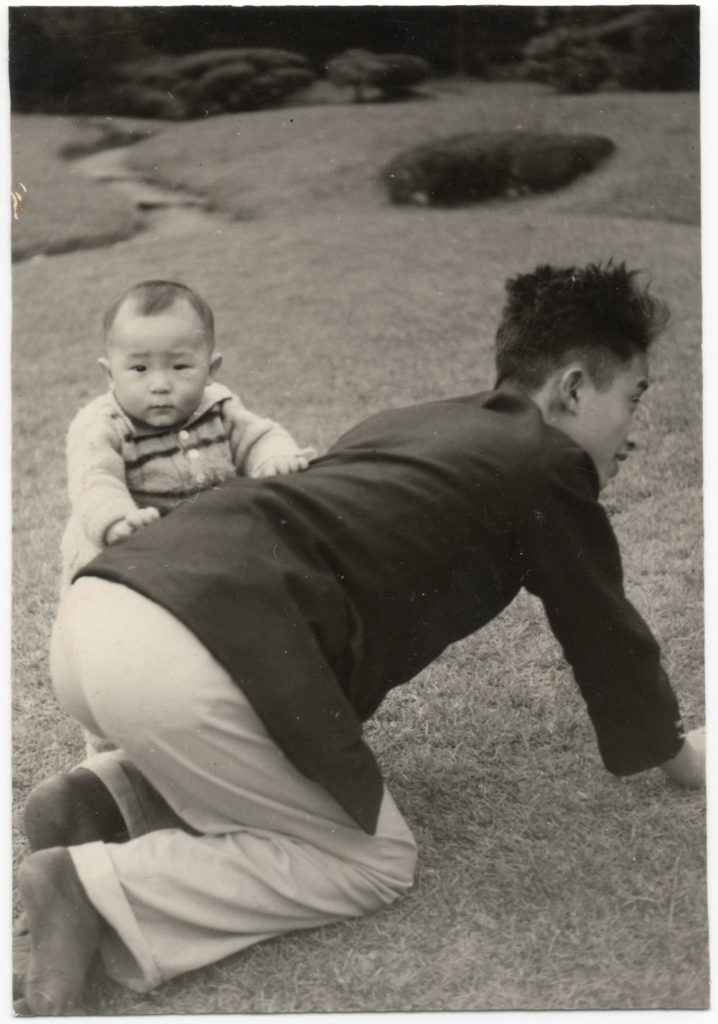
Nam June Paik and his nephew Ken Hakuta in a garden in Atami, Japan, 1950. Courtesy of the Nam June Paik Estate.
For Hakuta, this show is special for another reason: It symbolizes the burgeoning state of the Southeast Asian art world: “León Gallery International and Gagosian were right in the assessment that the Philippine market is ready for truly international art.”
Hakuta is an interesting figure unto himself. Aside from being Paik’s nephew, he was the titular host of The Dr. Fad Show in the late 1980s and early ‘90s, a children’s TV program focused on invention. Hakuta himself is behind many inventions, including the Wacky Wall Walker, one of the most popular toys in the 1980s.
![The US Ambassador to the Philippines, H.E. Sung Kim [left], discussing a Nam June Paik mixed media portrait of Joseph Beuys with Mr. Ken Hakuta (right), Courtesy of León Gallery International.](https://news.artnet.com/app/news-upload/2018/11/DSC_0307-1024x680.jpg)
The US Ambassador to the Philippines, H.E. Sung Kim [left], discussing a Nam June Paik mixed media portrait of Joseph Beuys with Mr. Ken Hakuta (right), Courtesy of León Gallery International.
The Filipino art market has grown immensely in recent years, and now stands as the 17th largest art auction market in the world, according to Ponce de Leon.
“I think it’s a measure of how developed the Philippines art market has become,” the gallerist says. “To have a highly sophisticated artist like Paik so well received in Manila demonstrates how international in outlook the Filipino collector is becoming.”
“Nam June Paik in Manila” is on view through November 30 at León Gallery International in Manilla.
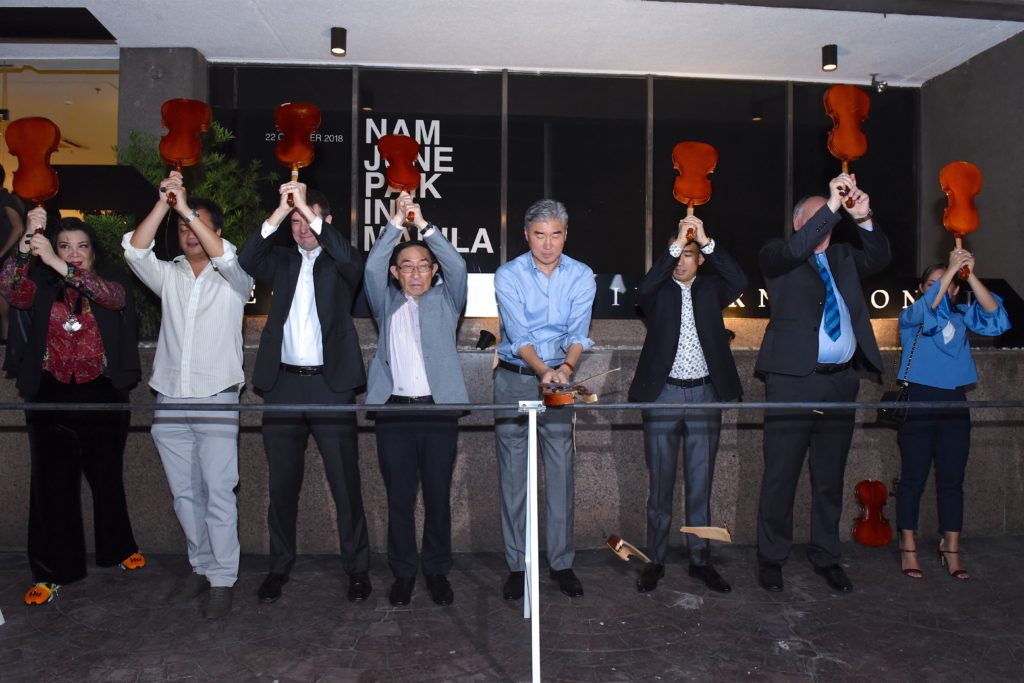




![The US Ambassador to the Philippines, H.E. Sung Kim [left], discussing a Nam June Paik mixed media portrait of Joseph Beuys with Mr. Ken Hakuta (right), Courtesy of León Gallery International.](https://news.artnet.com/app/news-upload/2018/11/DSC_0307-1024x680.jpg)



